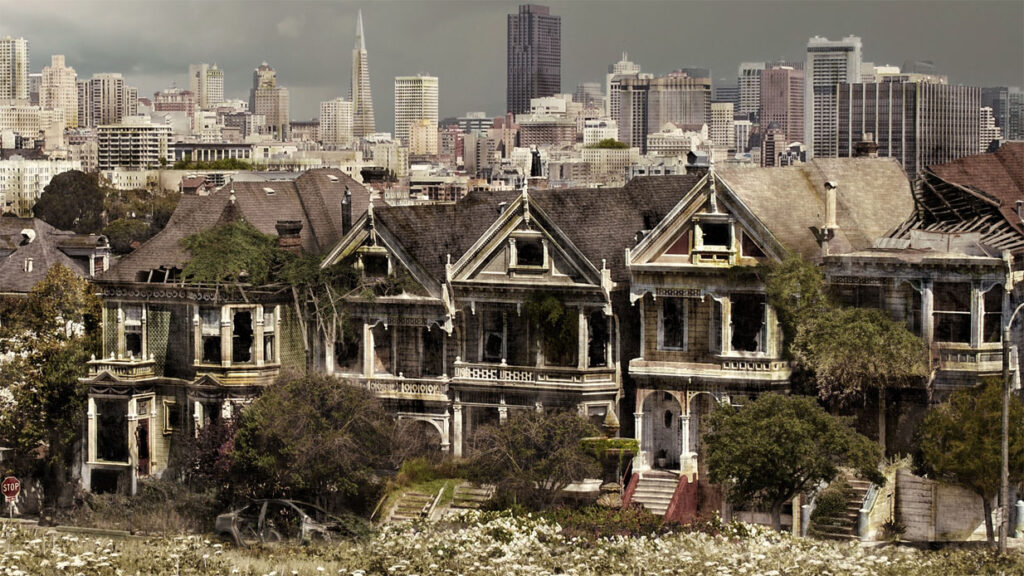San Francisco, once the jewel of the West Coast, is now grappling with seemingly insurmountable challenges. As tech employees pack up and high-rises sit empty, the city faces the ominous shadow of a “doom loop.”
Mike Browne, a retired cop with 30 years of service, patrols the streets of San Francisco as a “community ambassador.” He wears a blue shirt, signifying his role to help the few commuters and shoppers left navigate a downtown marred by homelessness and rising crime. One could almost feel the weight of despair in Browne’s words when he mentioned a recent incident with a disturbed individual. “You can’t fight crazy,” he remarked.
The 2010s were a different story. The tech industry blossomed, and San Francisco’s downtown buzzed with energy and innovation. But when the pandemic struck, those tech professionals found the ease of remote work too tempting. Giants like Meta Platforms and Salesforce slashed jobs and reduced their presence. The result? Floors of downtown office towers now ghostly vacant.
This mass exodus from the urban core combined with persistent issues like skyrocketing housing costs, street homelessness, rampant property crime, and the fentanyl crisis, plunging the city into chaos. Sandra Brealey, 63, laments the state of her once-beloved city. “I don’t feel safe. There’s garbage everywhere, and so many vagrants,” she said. Brealey is among many who have abandoned the downtown area in recent years.
To give some perspective, downtown San Francisco now ranks poorly compared to other major urban centers. An alarming 25.7% of office spaces remain vacant. Even popular retailers like Nordstrom and Banana Republic are closing shop. One cannot help but wonder: is the end near for San Francisco’s economic hub?
The city’s attempt to counteract this decline includes initiatives like community ambassadors. But many see these efforts as mere band-aids, unable to halt the city’s descent into the dreaded “doom loop” – a vicious cycle where decline breeds further decline.
Economists, however, can’t agree on the depth of the city’s plight. Arpit Gupta, a professor at NYU, expressed grave concerns, saying, “San Francisco is one of the cities I’d worry about the most. The triggering effects are there.
”San Francisco’s vulnerabilities were magnified during the pandemic. Despite job growth, the city failed to provide adequate housing, pushing residents into a corner: bear the exorbitant housing costs or endure exhausting commutes. But with the onset of remote work, many opted to leave, causing a staggering 7.5% drop in population between 2020 and 2022.
This exodus of workers has ripple effects. Jack’s Shoe Repair Service, a small business, has regained only about 40% of its business from pre-pandemic times. The owner, Setrak Soghomonian, paints a bleak picture: “The regular people are just not around anymore.
“This exodus of workers has ripple effects. Jack’s Shoe Repair Service, a small business, has regained only about 40% of its business from pre-pandemic times. The owner, Setrak Soghomonian, paints a bleak picture: “The regular people are just not around anymore.
”Even as some pin their hopes on the artificial intelligence sector, which includes giants like OpenAI, it seems the glory days of bustling downtown streets may remain a distant memory. And while there are efforts to repurpose vacant spaces and attract AI startups, it’s an uphill battle.
Entrepreneur Bilal Mahmood voiced concerns about the city becoming too dependent on a single industry. His solution? Bringing a university campus downtown. However, is this enough to reverse the tide?
The city’s strategies also include converting office spaces into homes. Rich Hillis, San Francisco’s planning director, highlighted plans to convert a mere fraction of the vast vacant spaces into apartments. But with the current downtown climate, will residents be attracted to such conversions?
Mayor London Breed seems to be clutching at straws, investing in programs like “Vacant to Vibrant,” hoping to breathe life back into the downtown area. She emphasizes the importance of public safety and the return of businesses. Yet, with rising crime rates and decreasing police presence, there’s an air of desperation.
To make matters worse, the shortage of police officers only deepens the city’s crises. And while Mayor Breed has increased the police overtime budget, it feels like a mere drop in the bucket.
In a rare glimmer of hope, tourism in the city seems to be on a slight uptick. At John’s Grill, a historical downtown restaurant, there’s a modest growth in revenue. But is tourism enough to pull San Francisco from the brink?
The elected officials in San Franciso are breathtakingly incompetent. Unless the citizens elect better one, San Francisco will continue to fall. And they deserve what they get.
This article was rewritten and summarized from a WSJ article.
